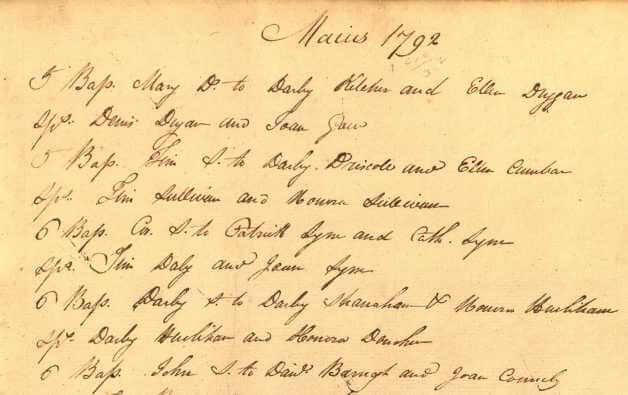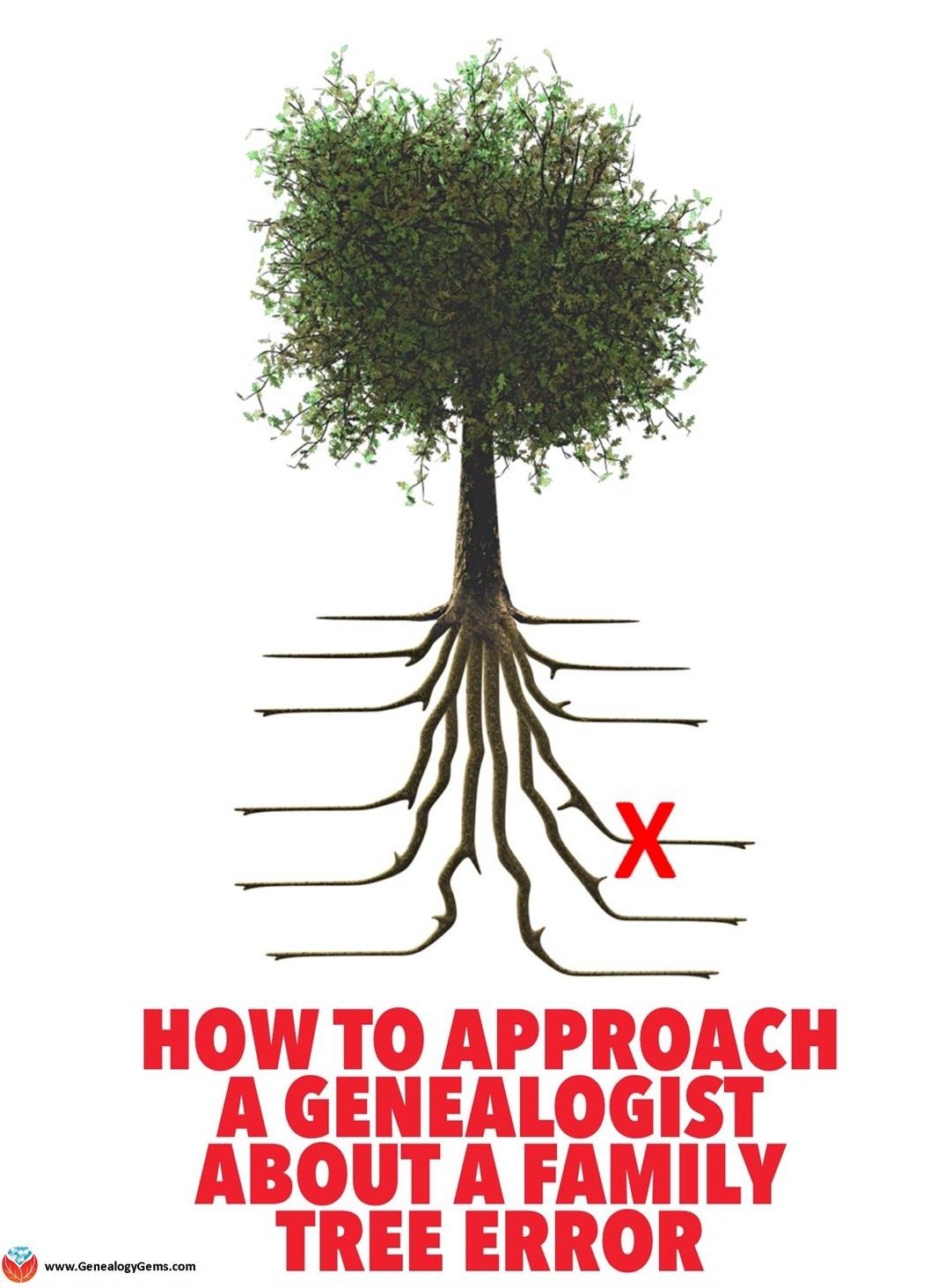New Irish genealogy records and more
New Irish genealogy records top this week’s list of noteworthy new family history collections online from around the globe. Also, find records for Austria, Brazil, France, Germany, Guatemala, Spain, Wales and the U.S. (FBI criminal files and collections for CO, ID, IL, KY, MA, TX, WV. All these collections come from the Genealogy Giants: Ancestry.com, FamilySearch.org, Findmypast.com and MyHeritage.com.
Featured: New Irish genealogy records online
The fabled luck of the Irish—or at least that of their descendants—continues throughout March, with significant new Irish genealogy records coming online. Subscription site Findmypast.com has updated its indexes of the Irish civil birth and marriage register images hosted online at IrishGenealogy.ie:
- The updated Irish Births Index consists of over 2.7 million indexed entries. “As well as listing the date and location of your ancestor’s birth, these new transcripts provide a variety of additional details including the names of both parents (including mother’s maiden name), father’s occupation and full dates of birth.”
- The updated Irish Civil Marriages now boasts over 2.6 million records. “These new transcripts…also provide a variety of additional details including the names of the couple’s parents, their fathers’ occupations, their residence and marital status.
Findmypast.com also posted more new Irish genealogy records:
- Antrim Histories & Reference Guides. Search George Benn’s authoritative work, A History of the Town of Belfast from the Earlier Times to the Close of the Eighteenth Century (1877). “It contains historic maps and illustrations as well as a chapter on noted inhabitants mentioned in seventeenth-century records including names such as Captain George Theaker, Arthur Chichester, Hugh Doak, Thoams Waring, George McCartney, and more.”
- Armagh Records & Registers. Browse 600 pages of Historical Memoirs of the City of Armagh (1819) to learn more about the history of Northern Ireland. “It contains biographical accounts of both Protestant and Roman Catholic archbishops, a narrative of important events, an account of the establishment of the Presbyterian congregations and the history of various customs and manners.”
- Church of Ireland Histories & Reference Guides. This collection has two PDF publications: The National Churches: The Church of Ireland (originally published in 1892) and Some Worthies of the Irish Church (published in 1900). Learn more about the history and practices of the Church of Ireland.
- Dublin Registers & Records. Over 2,000 records have been added to this collection of PDF images of “parish records (baptisms, marriages, and burials) from the Church of Ireland, census indexes, school registers, monumental inscriptions and printed histories. The records span from the 1600s up to 1800.”
- Irish Tontines Annuitants 1766-1789. “Over 153,000 annuity statements, accounts of deaths, death certificates, and marriage certificates relating to the subscribers and nominees of the Irish Tontine….The records in this collection have been released in association with the National Archives and cover the English tontine of 1789; the Irish tontines of 1773, 1775, and 1777; and the life annuities of 1766 to 1779.”
- Ireland, American Fenian Brotherhood 1864-1897. “Over 125,000 records from British Foreign Office correspondence regarding the American Fenian Brotherhood during the years from 1864 to 1897. Records include newspaper cuttings, letters, telegrams, lists of prisoners, and a number of photographs…. The collection includes accounts of the Brotherhood’s incursions into Canadian territory during the years 1866 to 1871.” Subscribers may also browse American Fenian Brotherhood records from 15,000 volumes of British Foreign Office papers.
- Royal Irish Constabulary History and Directories. This collection has been updated. It contains “an assortment of pay records, lists, directories, commendation records, treasury books, Constabulary Code books and training manuals.”
Ancestry.com has updated a few of its own Irish genealogy records collections (original data for the Irish Catholic registers comes from Celtic Catholic Registers, digitized images):
- Ireland, Select Catholic Birth and Baptism Registers, 1763-1917;
- Ireland, Select Catholic Confirmation Registers, 1775-1923;
- Ireland, Select Catholic Marriage Registers, 1775-1942;
- Ireland, Select Catholic Death and Burial Registers, 1767-1992;
- UK and Ireland, Obituary Index, 2004-2017;
- and, though not specifically an Irish collection, this updated database is expected to include plenty of Irish ancestors: Massachusetts, Boston Archdiocese Catholic Sacramental Records, 1789-1900.
More new genealogy collections worldwide
Austria. Nearly 34,000 indexed records are part of a new free collection at FamilySearch, Austria, Carinthia, Gurk Diocese, Catholic Church Records, 1527-1986. According to the site, this is a “collection of church books containing births, marriages, and deaths held at the Diocese of Gurk in Klagenfurt, Austria.”
Brazil. More than 100,000 records have been added to an existing free FamilySearch collection, Brazil, Santa Catarina, Catholic Church Records, 1714-1977. Also recently updated is its collection of Brazil, São Paulo, Immigration Cards, 1902-1980.
France. FamilySearch has added two new free census collections for France: upwards of 150,000 indexed names in France, Hautes-Alpes, Census, 1856 and over 66,000 names in France, Hautes-Alpes, Census, 1876. According to the collection descriptions, these are complete listings of the census for Hautes-Alpes in these years.
Germany. About 10,000 records each have been added to existing FamilySearch collections, Germany, Prussia, Brandenburg and Posen, Church Book Duplicates, 1794-1874 and Germany, Schleswig-Holstein, Kreis Steinburg, Civil Registration, 1874-1983.
Guatemala. Over 687,000 names have been added to the free FamilySearch collection, Guatemala Civil Registration, 1877-2008. According to the site, documents report “births, marriages, deaths, indexes and other records created by civil registration offices in Guatemala. Some of these records have been indexed and are searchable as part of this collection. Additional indexed records will be published as they become available.”
Spain. Over 22,000 names have been added to the free FamilySearch collection, Spain, Diocese of Cartagena, Catholic Church Records, 1503-1969. “These records include: baptisms, confirmations, pre-marriage investigations, marriages, deaths, indexes, testaments, and parish financial and land records. Some of these records have been indexed and are searchable as part of this collection. Additional indexed records will be published as they become available.”
United States. Subscription giant Ancestry.com has posted a new collection of F.B.I. Deceased Criminal Identification Files, 1971-1994. According to the site, “This database contains details about deceased individuals extracted from criminal identification files from 1971-1994….Details vary widely by form, but details in this index may include the following: name, birthplace, birth date, gender, race, death date, eye color, hair color, height, and weight.”
Various U.S. state-level collections include:
- Colorado. Ancestry.com has published a new collection, Colorado, Roman Catholic Diocese of Colorado Springs Sacramental Records, 1800-1967.
- Idaho. More than 650,000 names have been added to a free FamilySearch collection, Idaho, Southern Counties Obituaries, 1943-2013.
- Illinois. Nearly 2,000 records have been added to the free FamilySearch collection, Illinois, Cook County Deaths, 1878-1994.
- Subscribers of MyHeritage.com can explore a new collection, Kentucky Newspapers, 1848-2009. The collection includes nearly 1.4 million digitized newspaper pages. Among papers included are the Kentucky New Era, Middlesboro Daily News, Daily News, Harlan Daily Enterprise, Park City Daily News, Grayson County News-Gazette, and The Covington Journal.
- New at Ancestry.com is Massachusetts, Compiled Birth, Marriage, and Death Records, 1700-1850, which “consists of birth, marriage, and death records from the state of Massachusetts that took place between the years of 1700 and 1850.”
- Texas. Over 10,000 names appear in a brand new FamilySearch collection, Texas, El Paso Alien Arrivals, 1909-1924.
- West Virginia. MyHeritage.com subscribers also have access to a new collection of West Virginia Newspapers, 1930-2009. The collection currently has just over 370,000 digitized pages from papers such as Williamson Daily News, Point Pleasant Register, Spirit of Jefferson Farmer’s Advocate, The St. Mary’s Oracle, Grant County Press, The Glenville Democrat, and The Times Record.
Wales. Subscription site Findmypast.com has added over 43,000 new records to its collection of Monmouthshire Electoral Registers. According to the site, “The new additions consist of handwritten Gwent registers spanning the years 1832 to 1849 that will allow you to discover where your Welsh ancestor lived and the type of property they owned or rented. The early handwritten registers (1832-1839) are presented as images and transcripts and the later printed registers are presented as portable device formats (PDFs). The format of each register can vary depending on the constituency or the year of the register but most will reveal a combination of your ancestor’s abode, property type, property location, property name, year, constituency and district.”
Learn more about the Genealogy Giants
I keep my eye on the Genealogy Giants for you! All four, Ancestry.com, FamilySearch.org, Findmypast.com and MyHeritage, boast billions of historical records that can help you find your family history at home and abroad. But learning about each can be overwhelming! Click here for an introduction to these sites: what they have in common and what sets each apart. You’ll want to know so you can get the most out of them!
Disclosure: This article contains affiliate links and Genealogy Gems will be compensated if you make a purchase after clicking on these links (at no additional cost to you). Thank you for supporting Genealogy Gems!

About the Author: Sunny Morton
Sunny is a Contributing Editor at Lisa Louise Cooke’s Genealogy Gems; her voice is often heard on the Genealogy Gems Podcast and Premium Podcasts. She’s known for her expertise on the world’s biggest family history websites (she’s the author of Genealogy Giants: Comparing the 4 Major Websites); writing personal and family histories (she also wrote Story of My Life: A Workbook for Preserving Your Legacy); and sharing her favorite reads for the Genealogy Gems Book Club.










